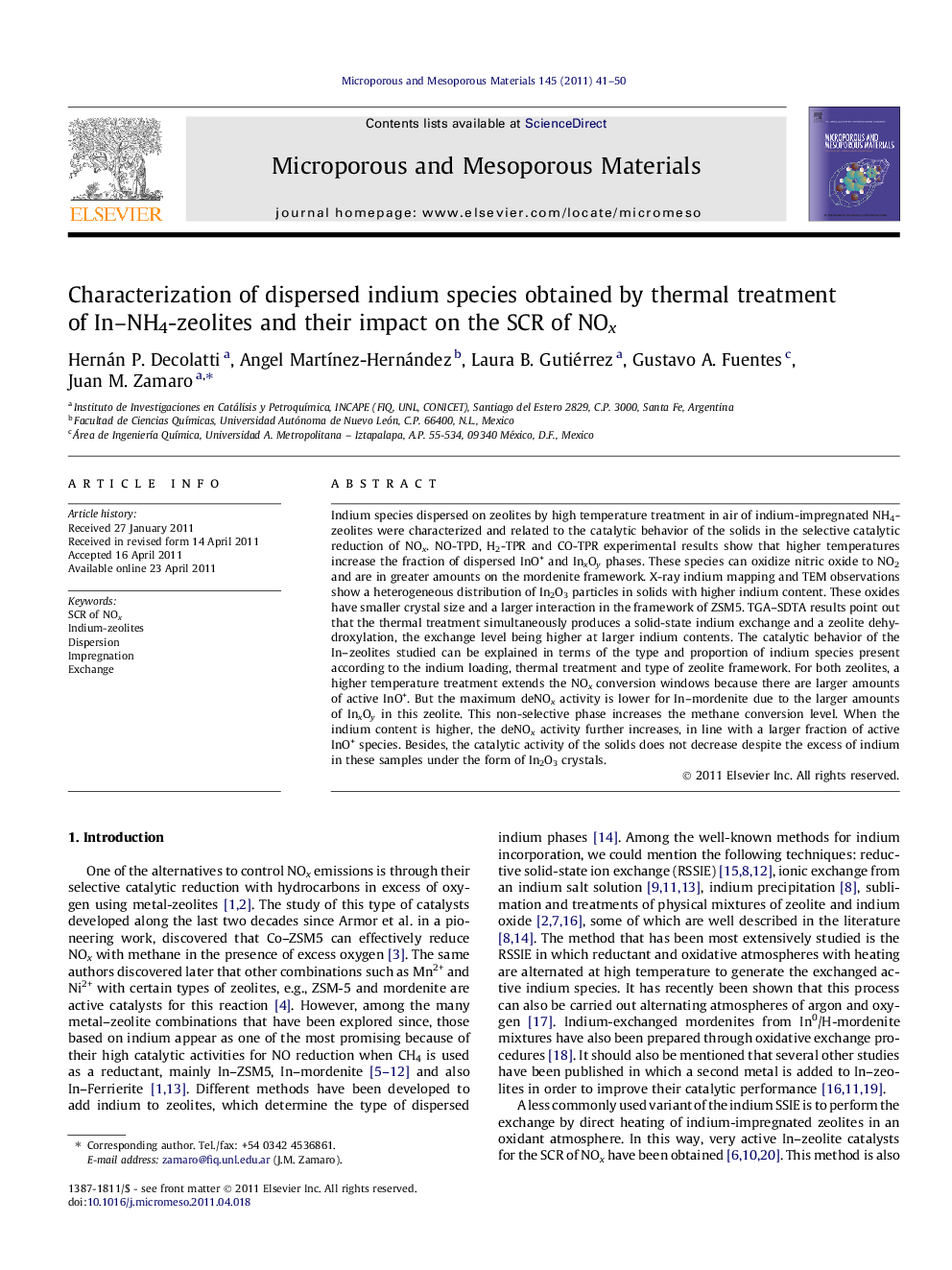| Article ID | Journal | Published Year | Pages | File Type |
|---|---|---|---|---|
| 74289 | Microporous and Mesoporous Materials | 2011 | 10 Pages |
Indium species dispersed on zeolites by high temperature treatment in air of indium-impregnated NH4-zeolites were characterized and related to the catalytic behavior of the solids in the selective catalytic reduction of NOx. NO-TPD, H2-TPR and CO-TPR experimental results show that higher temperatures increase the fraction of dispersed InO+ and InxOy phases. These species can oxidize nitric oxide to NO2 and are in greater amounts on the mordenite framework. X-ray indium mapping and TEM observations show a heterogeneous distribution of In2O3 particles in solids with higher indium content. These oxides have smaller crystal size and a larger interaction in the framework of ZSM5. TGA–SDTA results point out that the thermal treatment simultaneously produces a solid-state indium exchange and a zeolite dehydroxylation, the exchange level being higher at larger indium contents. The catalytic behavior of the In–zeolites studied can be explained in terms of the type and proportion of indium species present according to the indium loading, thermal treatment and type of zeolite framework. For both zeolites, a higher temperature treatment extends the NOx conversion windows because there are larger amounts of active InO+. But the maximum deNOx activity is lower for In–mordenite due to the larger amounts of InxOy in this zeolite. This non-selective phase increases the methane conversion level. When the indium content is higher, the deNOx activity further increases, in line with a larger fraction of active InO+ species. Besides, the catalytic activity of the solids does not decrease despite the excess of indium in these samples under the form of In2O3 crystals.
Graphical abstractFigure optionsDownload full-size imageDownload as PowerPoint slideHighlights► Temperature treatment, indium loading and zeolite framework on indium dispersion. ► Dispersed indium phases oxidize nitric oxide to NO2. ► Indium exchange is simultaneous to zeolite thermal dehydroxylation. ► Catalytic InO+ species increases with temperature and indium loading. ► In–mordenite activity is lower because non-selective InxOy species.
